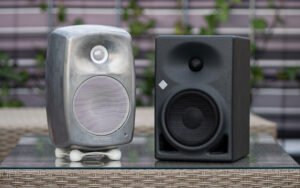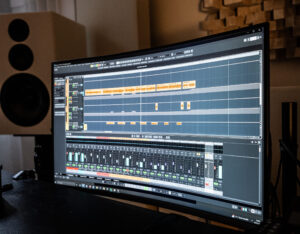We believe that what makes a great mix, even more importantly than equipment and experience in the craft, is the ability of a producer / engineer to understand the emotion and message of a song, and knowing how to transport that emotion effectively through the sound of the music. It’s one thing to understand the technology of music production and know how to theoretically use whatever you have in front of you, it’s something else to know what exactly a voice, an instrument or a mix needs, to capture its essence and make it sound “larger than life”.
First, Arrange It Well
The first important factor for a great mix is the stage of editing an arrangement. Anything that is not timed or pitched correctly, from instruments to vocal doubles, will introduce a sense of imperfection or even amateurism to the song. Taking the time to perfect an arrangement in terms of precision will elevate the mix to another level before you have even started mixing. Even during the production phase of your song you can make your mixing job easier by keeping in mind the balance you will want to achieve. For example, if your song is missing some high-frequency information overall, adding that during the production phase by introducing a track of cymbals or shakers, can be much more effective than trying to boost the high end of instruments that don’t naturally contain a lot of these frequencies.
There are no pre-sets or fixed patterns you could apply to any signal, because every voice, every instrument, every room, every microphone and every performance is different. The key to a good sound lies in the ability to understand what the vision is, and what is needed to get from A to B. Every mixing engineer has a specialty area. While knowledge and experience in music production are universal across genres, specific techniques usually shape the current popular sound of a genre.
Set The Stage
Our sense of hearing is steadily controlled and adapted by our brain, which tries to make sense of the information it recieves. When we hear a mix of instruments, our brain assigns positions and relations between these instruments though volume, frequency response and psychoacoustic information like echos and effects. Effectively this means that every instrument has to be mixed mainly in relation to everything else. For example, if a voice needs more low end energy, and you can’t seem to get it right with eq, instead of adding to the voice you might just have to reduce the low end on the beat. In relation to the beat the voice will now sound like it has a stronger low-end. This is just a very rudamentary example of how things work together in a mix.
Most of the information in a mix comes from levels, essentially everything that does not add sounds (generative effects) or morphs/distorts sounds (destructive effects) is based around volume. Though volume only we can place sounds in the mix using these basic principles:
LEFT / RIGHT
We can place sounds to the left or right side of the mix simply by panning. Using Stereo effects we can make a mono-sound wider, giving the impression of a bigger and closer sound-source.
FRONT / BACK
Placing sounds in the front or in the back of the soundstage is done by volume. A louder sound will be percieved closer, whereas a softer sound will be percieved as farther away. As mentioned above, keep in mind the relation between every element of the mix when leveling a signal. What element is supposed to be upfront, what element is supposed to accompany the mix more subtly?
UP / DOWN
How high up or low down we percieve a sound is mostly based on its frequency response. Naturally we experience lower frequencies as resonating lower in the body, while high frequencies resonate in the head. Since lower frequencies appear lower on the soundstage, another way of placing sounds is through EQ-ing both channels independently. If you reduce the high-frequency content of your left signal, the right signal will appear brighter and therefore higher up in the mix. That way you can further place sounds in all 3 dimensions of the mix while retaining a natural sound. This method is also referred to as spectral panning or frequency-based panning.
To Be Continued…


